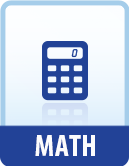|
This section contains 1,310 words (approx. 5 pages at 300 words per page) |

|
Figurative numbers are numbers which can be represented by dots arranged in various geometric patterns. For example, triangular numbers are represented by the patterns shown in Figure 1.
The numbers they represent are 1, 3, 6, 10, and so on.
Figurative numbers were first studied by the mathematician Pythagoras in the sixth century b.c. and by the Pythagoreans, who were his followers. These numbers were studied, as were many kinds of numbers, for the sake of their supposed mystical properties rather than for their practical value. The study of figurative numbers continues to be a source of interest to both amateur and professional mathematicians.
Figurative numbers also include the square numbers which can be represented by square arrays of dots, as shown here.
The first few square numbers are 1, 4, 9, 16, 25, etc.
There are pentagonal numbers based on pentagonal arrays. Figure 3 shows the fourth pentagonal number, 22.
Other pentagonal numbers are 1, 5, 12, 22, 35, and so...
|
This section contains 1,310 words (approx. 5 pages at 300 words per page) |

|


